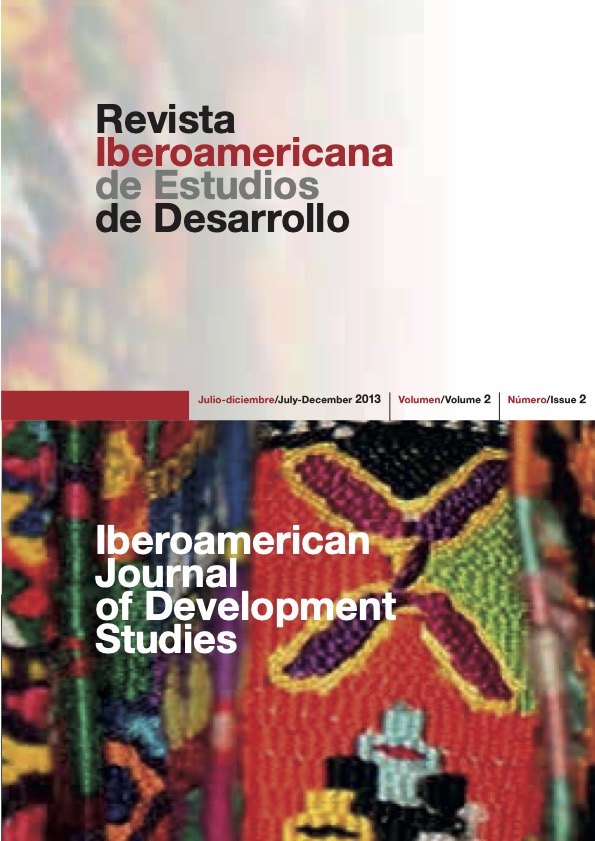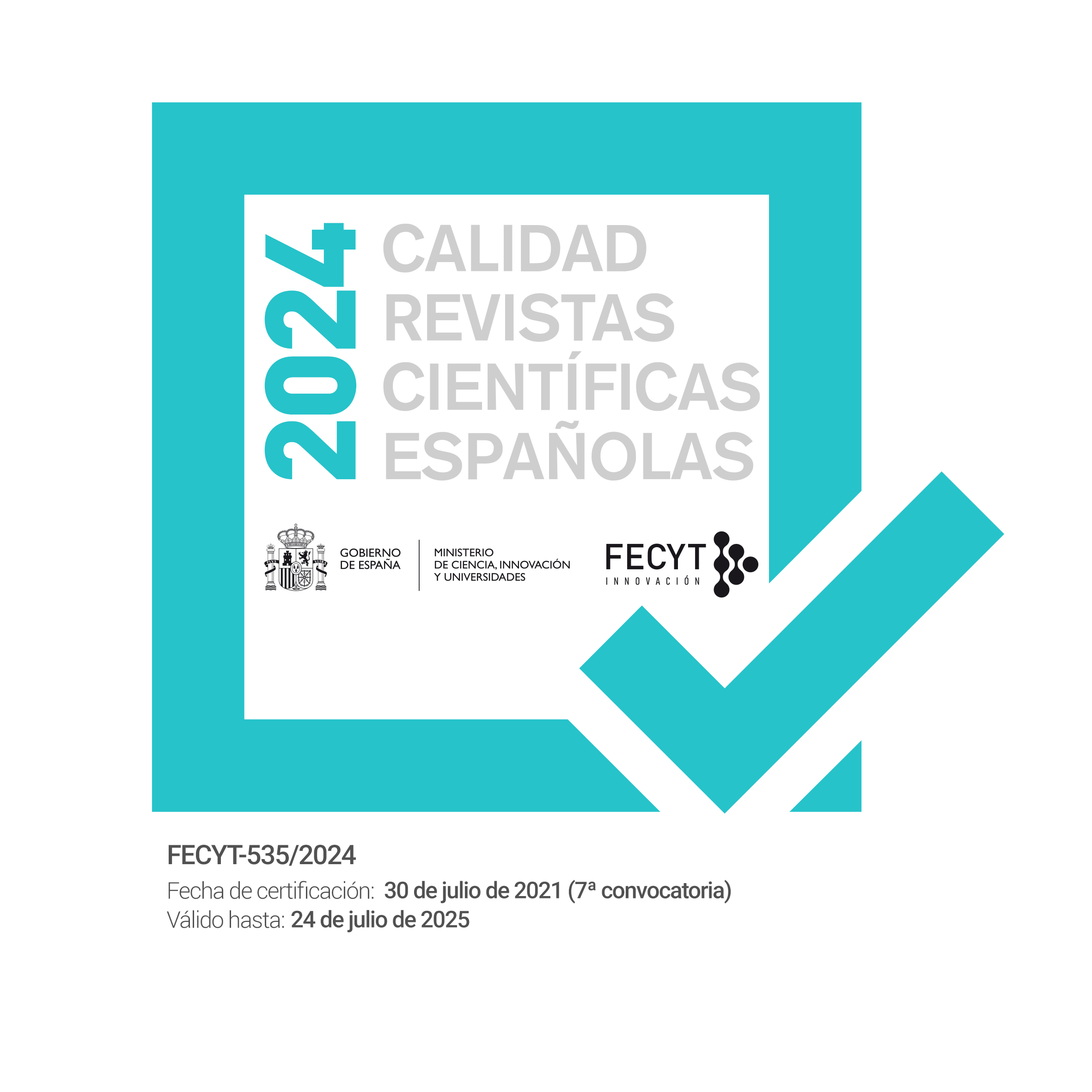Development, demographic transition and net migration: evidence for the municipalities of Mexico, 2000-2010
DOI:
https://doi.org/10.26754/ojs_ried/ijds.83Keywords:
net migration rate, natural growth of population, human development index, demographic transition, inequalityAbstract
In this paper we review and integrate into a single analytical framework the theoretical approaches that explain the connection of the development process with natural population growth, migration and income inequality. Also, we provide evidence of the direction and intensity of these relations for the case of Mexico. With this purpose, we estimate the net migration rate of the 2,443 municipalities of the country during the period 2000-2010, finding that higher levels of development correspond to lower rates of natural population growth and with lower rates of emigration. We find no evidence of a hypothetical positive relationship between emigration and inequality, and doubt about that income inequality increases at the beginning of the development process and then decline. In any case, the detected relationships are weak, suggesting that some specific factors are left out of the analysis.
Downloads
References
ACKERMAN S (1976). Theories and methods of migration research. In: Runblom H, Norman H (eds.). From Sweden to America: a history of the migration. University of Minnesota Press, Minneapolis, pp 19-75
ARAGONÉS A, SALGADO U (2011). ¿Puede la migración ser un factor para el desarrollo de los países expulsores? Migración y Desarrollo 9(17):45-68
ARANGO J (2003). La explicación teórica de las migraciones: luz y sombra. Migración y Desarrollo 1(1)
ARRAZOLA E (2010). Los efectos de la migración y las remesas en la distribución de los ingresos de los hogares rurales. Una comparación regional (2000-2008). Tesis de Maestría en Economía Aplicada, El Colegio de la Frontera Norte, Tijuana, México
ARRAZOLA E (2011). Los efectos de las remesas en la distribución de los ingresos: el caso de la cooperativa de pescadores Brisas de Pijijiapan, Chiapas. En: López J, Peláez Ó (eds.). Migración, pobreza y acción pública en Chiapas. Universidad Autónoma de Chiapas, Tuxtla Gutiérrez, México, pp 31-62
ARRIAGA EE, DAVIS K (1969). The pattern of mortality change in Latin America.Demography 6(3):223-242
BAGEHOT W (1895). Adam Smith and our modern economy. En: Hutton R H (ed.).Economic studies. Longmans, Londres
BARKIN D (1972). ¿Quiénes son los beneficiarios del desarrollo regional? En: Barkin D (comp.). Los beneficiarios del desarrollo regional. Secretaría de Educación Pública, México, pp 74-89
CANALES AI (2008). Vivir del norte: remesas, desarrollo y pobreza en México. Consejo Nacional de Población, México
CHENERY HB, SYRQUIN M (1975). Patterns of development, 1950-1970. Oxford University Press, Oxford
CHESNAIS JC (1992). The demographic transition: stages, patterns, and economic implications: a longitudinal study of sixty-seven countries covering the period 1720-1984. Clarendon Press, New York
CONAPO (2012). Índices de intensidad migratoria México-Estados Unidos 2010. Consejo Nacional de Población, México
CONEVAL (2009). Mapas de desigualdad 2000-2005. Consejo Nacional de Evaluación de la Política de Desarrollo Social, México
DAVIS K (1956). The amazing decline of mortality in underdeveloped areas. The American Economic Review, 46(2):305-318
DAVIS K (1963). The theory of change and response in modern demographic history.Population Index 29(4):345-366
DE HAAS H (2007). Turning the tide? Why development will not stop migration. Development and Change 38(5):819-841
DE HAAS H (2008). Migration and development: a theoretical perspective. International Migration Institute Working Paper 9
DOMÍNGUEZ R (2009a). Las dos U invertidas de la migración en México. I Congreso Internacional sobre Pobreza, Migración y Desarrollo, San Cristóbal de Las Casas,México
DOMÍNGUEZ R (2009b). La salida de los sin voz: aproximación a las migraciones internacionales desde la economía política. En: López J (ed.). Globalización, migración y economía chiapaneca. Universidad Autónoma de Chiapas, Tuxtla Gutiérrez, México, pp 47-71
DURAND J, MASSEY DS (2003). Clandestinos: migración México-Estados Unidos en los albores del siglo xxi. Miguel Ángel Porrúa y Universidad Autónoma de Zacatecas, México
EASTERLIN A (1961). Influences in European overseas emigration before World War I. Economic Development and Cultural Change 9(3):331-351
FRIEDLANDER D (1969). Demographic responses and population change. Demography 6(4):359-381
GOULD JD (1980). European intercontinental emigration: the role of ‘diffusion’ and ‘feedback’. Journal of European Economic History 9:267-315
HATTON TJ, WILLIAMSON JG (1992). International migration and world development: a historical perspective. National Bureau of Economic Research Working Paper, 41
HATTON TJ, WILLIAMSON JG (1998). The age of mass migration: causes and economic impact. Oxford University Press, New York
IDMC (2010). México: desplazamiento forzado a consecuencia de la violencia de los cárteles de la droga. Norwegian Refugee Council
INEGI (2003). XII censo general de población y vivienda 2000. Instituto Nacional de Estadística, Geografía e Informática, Aguascalientes
INEGI (2010). Encuesta nacional de la dinámica demográfica 2009: informe operativo.Instituto Nacional de Estadística y Geografía, Aguascalientes
INEGI (2011a). Censo de población y vivienda 2010. Instituto Nacional de Estadística y Geografía, Aguascalientes
INEGI (2011b). Estadísticas de natalidad: consulta interactiva de datos. Instituto Nacional de Estadística y Geografía, Aguascalientes
INEGI (2011c). Estadísticas de mortalidad: consulta interactiva de datos. Instituto Nacional de Estadística y Geografía, Aguascalientes
ISSERMAN AM (1993). The right people, the right rates: making population estimates and forecasts with an interregional cohort-component model. Journal of the American Planning Association 59(1):45-64 KUZNETS S (1955). Economic growth and income inequality. American Economic Review, 45(1):1-28
LANDRY A (1909). Les trois théories principales de la population. Scientia 6(3):3-29 LANDRY A (1934). La révolution démographique: études et essais sur les problèmes de la population. Librairie Sirey, Paris
LEWIS WA (1954). Economic development with unlimited supplies of labour. Manchester School of Economics and Social Studies 22:139-191
LIVI-BACCI M (2002). Historia mínima de la población mundial. Ariel, Barcelona
LOZANO F (2003). Discurso oficial, remesas y desarrollo en México. Migración y Desarrollo 1
MALTHUS TR ([1872] 1986). Ensayo sobre el principio de la población, 7.ª ed. Fondo de Cultura Económica, México
MARTIN P, TAYLOR JE (1996). The anatomy of a migration hump. En: Taylor JE (ed.).Development strategy, employment, and migration: insights from models. OECD, Paris, pp 43-62
MASSEY DS (1988). Economic development and international migration in comparative perspective. Population and Development Review 14(3):383-413
MASSEY DS, ALARCÓN R, DURAND J, GONZÁLEZ H (1987). Return to Aztlan: the social process of international migration from Western Mexico. University of California Press, Berkeley
MASSEY DS, ARANGO J, HUGO G, KOUAOUCI A, PELLEGRINO A, TAYLOR JE (1993). Theories of international migration: a review and appraisal. Population and Development Review 19(3):431-466
MASSEY DS, ARANGO J, HUGO G, KOUAOUCI A, PELLEGRINO A, TAYLOR JE (1998). Worlds in motion: understanding international migration at the end of the millennium. Oxford University Press, Nueva York
MCKENZIE D, RAPOPORT H (2007). Network effects and the dynamics of migration and inequality: theory and evidence from Mexico. Journal of Development Economics 84(1):1-24
MORA JJ (2004). El impacto de la migración y las remesas en la distribución y fuentes de ingresos: el caso del México rural (región centro-occidente). En: Aguirre J, Pedraza Ó (coords.). Migración internacional y remesas en México. Universidad Michoacana de San Nicolás de Hidalgo, Michoacán, México
MYRDAL G ([1957] 1979). Teoría económica y regiones subdesarrolladas. Fondo de Cultura Económica, México
NOTESTEIN FW (1945). Population: the long view. In: Schultz TW (ed). Food for the world. University of Chicago Press, Chicago, pp 36-57
OROZCO M (2004). Remittances to Latin America and the Caribbean: issues and perspectives on development. Organization of American States, Washington
PELÁEZ Ó (2009). Descripción y proyección de la esperanza de vida al nacimiento en México (1900-2050). Estudios Demográficos y Urbanos 24(2):469-492
PELÁEZ Ó (2012a). Evolución de la esperanza de vida de Costa Rica en el contexto global (1930-2010). Población y Salud en Mesoamérica 10(1)
PELÁEZ Ó (2012b). Análisis de los indicadores de desarrollo humano, marginación, rezago social y pobreza en los municipios de Chiapas a partir de una perspectiva demográfica. Economía, Sociedad y Territorio 12(38):181-213
PELÁEZ Ó, MARTÍNEZ J, GARCÍA RF (2013). El papel de las remesas en los hogares de Chiapas. ¿Consumo, inversión o ahorro? ¿Una vía para el desarrollo? Estudios Sociales 21(41):288-313
PHC (2012). Net migration from Mexico falls to zero and perhaps less. Pew Hispanic Center, Washington
PIORE MJ (1979). Birds of passage: migrant labor and industrial societies. Cambridge University Press, Cambridge
PNUD (2003). Informe sobre desarrollo humano México 2002. Mundi-Prensa, México
PNUD (2007). Informe sobre desarrollo humano México 2006-2007: migración y desarrollo humano. Programa de las Naciones Unidas para el Desarrollo, México
PNUD (2008). Índice de desarrollo humano municipal en México 2000-2005. Programa de las Naciones Unidas para el Desarrollo, México PNUD (2011). Informe sobre desarrollo humano México 2011. Programa de las Naciones Unidas para el Desarrollo, México
PNUD (2012). El índice de desarrollo humano en México: cambios metodológicos e información para las entidades federativas. Programa de las Naciones Unidas para el Desarrollo, México
RATHA D (2003). Worker’s remittances: an important and stable source of external development finance. In: The World Bank (ed.). Global development finance: striving for stability in development finance. The World Bank, Washington, pp 157-175
RAVENSTEIN EG (1885). The laws of migration. Journal of the Statistical Society of London 48(2):167-235
RAVENSTEIN EG (1889). The laws of migration. Journal of the Royal Statistical Society 52(2):241-305
REICHERT J (1981). The migration syndrome: seasonal U.S. wage labor and rural development in central Mexico. Human Organization 40(1):56-66
ROSERO-BIXBY L (1991). Socioeconomic development, health interventions and mortality decline in Costa Rica. Scandinavian Journal of Social Medicine, Supplementum 46:33-42
SALINARI G, DE SANTIS G (2011). The role of the demographic transition in the formation of the trans-Mediterranean and trans-Saharan migration systems. Population Association of America (PAA) 2011 Annual Meeting, Washington
SASSEN S ([1988] 1993). La movilidad del trabajo y del capital: un estudio sobre la corriente internacional de la inversión y del trabajo. Ministerio de Trabajo y Seguridad Social, Madrid
SEDESOL (2012). Delimitación de las zonas metropolitanas de México 2010. Secretaría de Desarrollo Social / Consejo Nacional de Población / Instituto Nacional de Estadística y Geografía, México
SKELDON R (2008). International migration as a tool in development policy: a passing phase? Population and Development Review 34(1):1-18
STARK O, YITZHAKI S (1988). Labour migration as a response to relative deprivation. Journal of Population Economics 1:7-70
STARK O, TAYLOR JE, YITZHAKI S (1986). Remittances and inequality. The Economic Journal 96:722-740
TAYLOR JE (1999). The new economics of labour migration and the role of remittances in the migration process. International Migration 37(1):63-86
TERRY D (2006). Las remesas como instrumento de desarrollo. Banco Interamericano de Desarrollo, Washington
THOMPSON WS (1929). Population. American Sociological Review 34(6):959-975
ZELINSKY W (1971). The hypothesis of the mobility transition. Geographical Review 61(2):219-249
Downloads
Published
How to Cite
Issue
Section
License
Copyright (c) 2013 Óscar Peláez-Herreros

This work is licensed under a Creative Commons Attribution-NonCommercial-NoDerivatives 4.0 International License.








